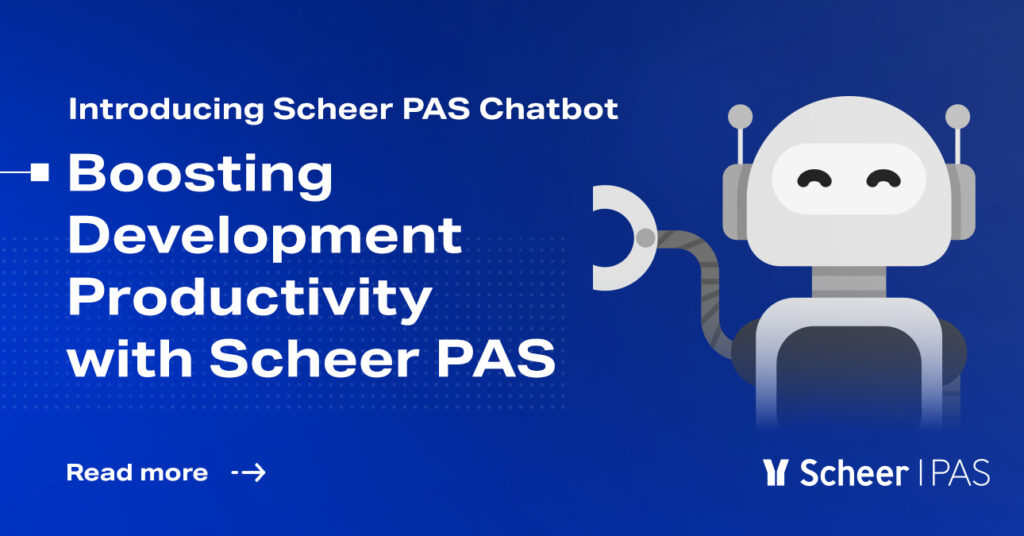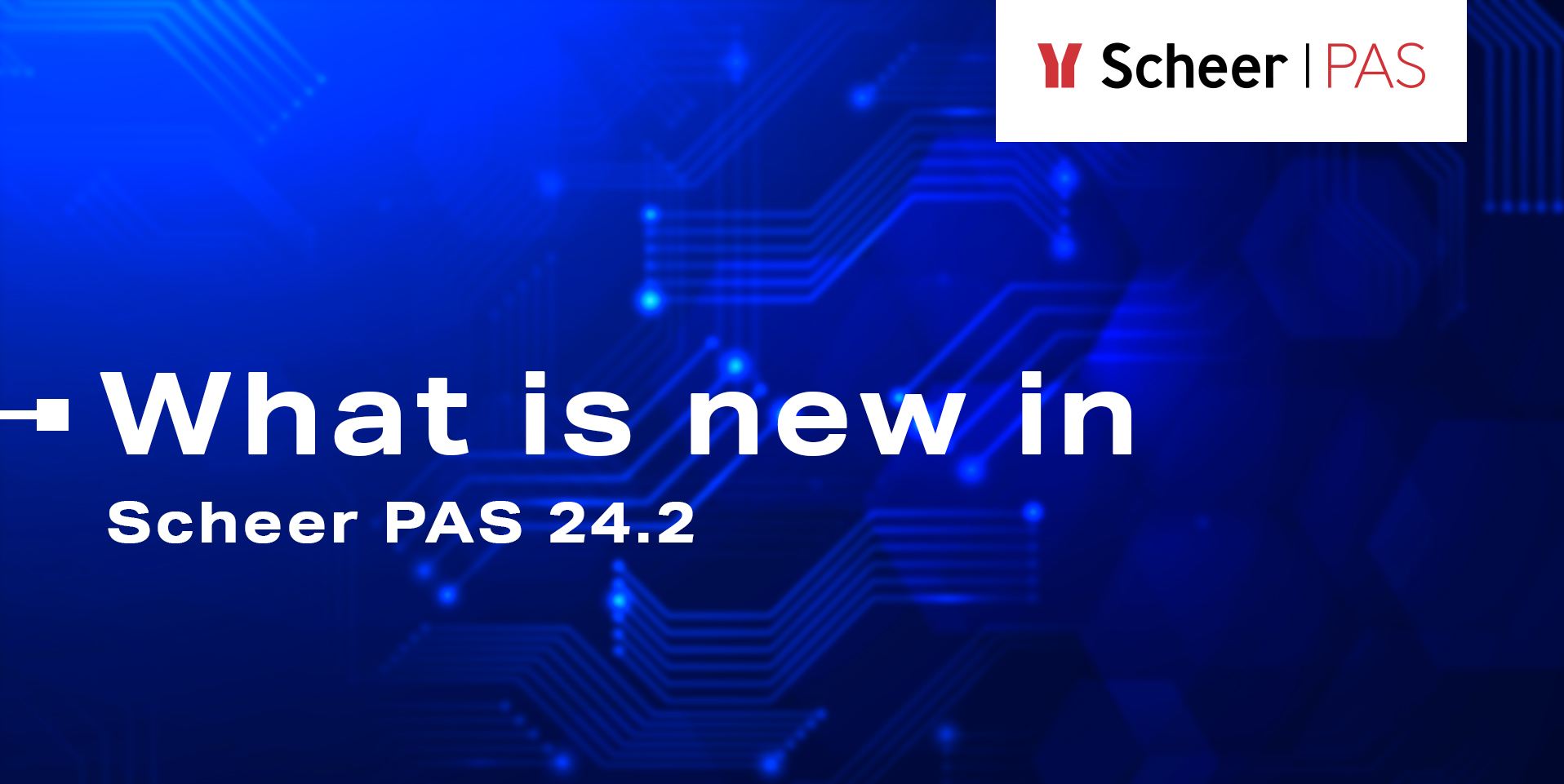Boost Development Productivity with Scheer PAS’s AI-Powered Chatbot

If you’ve ever visited scheer-pas.com, one of the first things you might notice is the wide range of capabilities the Scheer PAS platform offers to enterprises. Whether an organization is managing IT integration, automating processes while analyzing and mining results, leveraging APIs, developing applications, or transitioning from monolithic to microservice architectures, Scheer PAS handles all of this with ease. Our documentation team has worked diligently to provide support through tutorials, how-tos, best practices, and examples for each of these capabilities. With the rise of AI and large language models (LLMs) — a type of AI which processes and generates human-like text — we recognized the potential to harness these technologies to simplify the use of Scheer PAS even further.
Building an AI-Powered Chatbot: The Project Requirements

Our extensive knowledge database, built on Scheer PAS documentation, was the ideal foundation for an AI project aimed at making the platform more approachable for beginners. These were main criteria for Chatbot creation:
- It had to be useful and convenient for end users.
- The AI’s primary focus should be on enhancing the platform’s powerful capabilities.
- In line with enterprise-level security standards, the AI could not collect or share customer data in any form.
- Feedback from the AI had to be anonymous and optional, empowering users to improve it further if they found it helpful.
Scheer PAS clients span a variety of industries, many of which deal with highly regulated environments. Therefore, our team ensured that all AI implementations were tailored to meet these industry-specific needs, with an emphasis on compliance and security.
How Our AI Chatbot Meets Enterprise Needs
The first two points were ensured by using a Retrieval-Augmented Generation (RAG) for enhancing the accuracy and reliability with facts fetched from external sources. Ensuring convenience was straightforward, as PAS Chatbot is easily accessible from almost any part of the platform, making it available right where users need it most. Through rigorous learning and re-evaluation during the development process, PAS Chatbot became adept at identifying the right materials and delivering suggestions in a conversational manner, much like how a human support agent might respond. By the time the development phase concluded, its usability had reached a level where it significantly accelerated the development process for end-users, reducing the time spent on searching for information.
Given that Scheer PAS clients handle complex business processes, often with multiple SAP and non-SAP integrations, safeguarding their information was paramount. To achieve this, Scheer PAS opted for an open-source LLM server with open models, all neatly packaged in a Docker container and accessed via a web API on the platform. By choosing this open-source approach, we ensured that the platform operates completely independently from external AI providers like OpenAI, ensuring that no user data is stored or shared externally. The hosting and maintenance of PAS Chatbot are fully managed by Scheer PAS, and because the AI can only access Scheer PAS documentation, users are guaranteed complete security and control over their data.
Contextualization of the Components
With Scheer PAS’s many capabilities, one key question arises: How does PAS Chatbot know what the user is working on and select the correct part of the documentation? The answer lies in the chatbot’s ability to contextualize using a vectorized dataset — essentially breaking down documentation into segments and creating associations that allow the AI to quickly retrieve the most relevant information.

For instance, when a user is working in Scheer PAS Designer, the chatbot prioritizes content related to that specific module. If the user switches to API Management or Prozess-Bergbau, the chatbot adapts accordingly. This capability is underpinned by a technology known as vectorized search, which enables the AI to find the most contextually appropriate information based on where the user is in the platform. Users working in API Management will naturally see suggestions and support documentation focused on APIs, while those in Process Mining receive responses tailored to that domain. This contextualization creates a seamless experience, allowing users to get accurate, targeted answers faster.
Our extensive testing revealed that this approach provided optimal results for users by prioritizing the information relevant to their workflow without ever blocking access to other parts of the platform. This means that if a user wants to explore unrelated areas of Scheer PAS, they can still receive help on those topics, with only the priority shifting to their current work context.
Where is PAS Chatbot?

The AI implementation on the Scheer PAS platform is available to all users starting from version 24.2, which is already live. PAS Chatbot can be accessed from almost any area of the platform via the icon in the header. Along with PAS Chatbot, version 24.2 introduced another exciting feature: the Java DevKit, further enhancing the flexibility of the Scheer PAS user experience by allowing users to develop custom Java modules directly within the platform. You can read more about these updates on this link.

